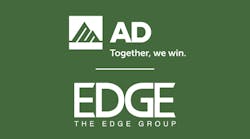Whether you are a master of marketing with an MBA from Northwestern University, an industry newbie, or a wily industry veteran, you will come away from this article with a few new ideas that you can integrate into your company’s marketing strategies. Many of these marketing tips were first published in an Oct. 2001 article, “99 Ways to Sell Your Stuff,” and Electrical Wholesaling’s editors were amazed by how many of these ideas still hold their weight today. Electrical distributors have quite a few more digital marketing tools at their disposal now than they did back then, but a surprising number of the basic tenets of creating demand for your company’s mix of products and services haven’t changed all that much.
Market Your Company to Your Employees
This is an important but often-overlooked element of many marketing plans. You have external and internal customers. Your employees are your internal customers, and you must market your company to them, just as you market it to existing and potential customers. Market demand for the best workers is high, and your stars will have other employment opportunities. The best way to keep them from moving on is to offer a competitive package of pay and benefits and an employee-friendly work environment.
1. Make sure employees are informed about your company’s strategic direction and financial health.
2. Develop a mission statement that clearly states the company’s reason-to-be, or as the French say, its “raison d’etre.”
3. Offer career-training opportunities.
4. Offer a competitive package of company benefits.
5. Eliminate a “punch-the-clock” mentality by creating a work environment that makes employees feel they are part of a winning team working toward a common goal.
6. Teach the company’s key leaders the importance of open communication with all employees.
Market Your Company to the Overall Community
Too many electrical distributors don’t focus on ensuring that their companies project a professional image in the marketplace. Image is everything these days. Just because your company may service electrical contractors and facility maintenance from a branch in an industrial park mostly hidden from the community doesn’t mean you have to settle for a rundown location, or position your company as anything less than a best-in-class source of supply.
7. Take a ride around town and look at the branches of your competitors and the local branch operations owned by distributors in other industries, and do your due diligence on how they market themselves in the community on the web and in their industry. Then do an honest evaluation of how your company stacks up against them in these areas.
8. Keep all company locations and parking lots well maintained and properly lit.
9. Keep all company signage on buildings and trucks freshly painted.
10. Provide shirts, sweaters or uniforms with the company logo for all employees — particularly for truck drivers, counter workers, outside salespeople (if appropriate) and anyone else with customer contact.
11. Be active in your town’s civic organizations, not only for the networking opportunities and exposure they offer, but also for the chance to pay back to your community what it has done for you.
12. Be an active member of the local electrical league.
Market Your Value-Added Services to Customers Like Crazy
The value-added services you offer will do more to differentiate your company from AmazonSupply and other online competitors than anything else. Wrap these value-added services around the core mantra of any distributor — getting the right product in the right quantity to the right customers, when and where they want — and at a fair price. If you need a reminder on the core value-added services that an electrical distributor offers, go to www.ewweb.com and type “50 Ways to Add Value” in the search engine. Following are just a few ideas for value-added services you may not already offer.
13. Having informed, engaged employees is one of the greatest value-added services you can offer. Make sure office personnel (not only salespeople) know your key customers. Hold “home and away” meetings with key or potential customers so your company and the customer can connect a face with a telephone voice.
14. Offer a tool-rental program for more expensive power equipment such as power benders and generators.
15. Provide industrial plants with full-time, on-site tool crib stocking.
16. Provide key customers with demonstration models of tools or samples of new supplies so they can evaluate the products under job-site conditions.
17. “Kit” products for manufacturing plants that need a certain group of electrical or electronic components to be built into the products they produce.
18. Package products for shipping by job-site location, such as an area of an industrial plant, apartment complex unit, floor of an office building, etc.
Position Customer Training as a Core Value-Added Service
Make sure training is a centerpiece of your company’s marketing efforts because it’s one of the most effective tools to differentiate you from online marketers like AmazonSupply that offer little more than price and delivery. Don’t underestimate the value of training as an image-building tool. It paints an image of your company in the mind of customers as a knowledgeable resource.
19. Look into a learning management system (LMS) developed by online training specialists like BlueVolt (www.bluevolt.com).
20. Help electrical contractors and other smaller customers develop business skills such as accounting, bookkeeping, estimating and marketing by offering your in-house experts in these areas as mentors.
21. Use articles from trade magazines as discussion points for “Lunch-and-Learn” sessions to train employees on areas of focus for your company.
22. With the all the changes in the 2014 National Electrical Code, have a National Electrical Code Changes luncheon or dinner with presentations from vendors whose products are most affected. Many of the changes call for increased use of AFCIs and GFCIs and touch on new wiring regulations for renewables and electric vehicle charging stations.
Develop an Integrated Strategic Marketing Plan
Offering electrical distributors, reps and manufacturers the tools, data and insight to develop effective marketing plans has always been one of the core editorial missions of Electrical Wholesaling, and you can check out the editorial archives at www.ewweb.com for much more information on this topic. Here are a few evergreen ideas to consider when developing or revising your strategic marketing plan.
23. If you don’t already have a marketing director whose job responsibilities are devoted 100% to marketing, you better seriously consider hiring one. Best-of-class distributors have full-time marketing directors and you need one, too.
24. If you are a member of a marketing/buying group, it’s not all about the volume discounts. Make sure you maximize the marketing expertise and networking opportunities they offer. At their meetings you will meet plenty of manufacturers and distributors who have mastered different elements of marketing.
25. Develop a written strategic marketing plan with input from key employees that specifically defines the company’s short- and long-term marketing goals and the strategies it will muster to meet these goals.
26. Utilize EW’s Market Planning Guide’s market data and data from DISC Corp. (www.disccorp.com) to measure your company’s market share and the potential of new market niches or geographic areas.
27. When developing a new database of potential customers, new geographic areas or potential buyers of products in a new market niche, make your local business library your first stop. Libraries often have the Dun & Bradstreet Million Dollar Database, which contains an amazing amount of company data and can be searched by industry classification, locations, sale and other parameters.
28. Assign someone to keep your customer database updated. A database with inaccurate contact information wastes your time and alienates current and existing customers.
Ask the Market
You don’t need to do market research on the level of a Proctor & Gamble product launch to get a feel if your customers or a local market area ready for a new product or branch. Here are a few quick ideas on how to do market research.
29. Survey customers and then listen to what they say. Try asking customers for suggestions about what other products you should stock.
30. Conduct a focus group.
31. Trade shows or counter days offer an excellent opportunity to survey customers. Don’t miss this chance.
32. Contact local colleges or universities to see if any of the business professors ever have classes that do survey work for outside companies as part of their course work. It can be an inexpensive method of conducting a survey, and it’s a great experience for the students.
33. Hire an outside consultant to do the market research. If you don’t have the time or personnel internally to do a survey, there are some truly excellent consultants that focus on these sorts of projects for electrical distributors. Some of best consultants are listed on page 2 under Electrical Wholesaling’s Contributing Writers.
Buy Into Promotions 101
Here are some evergreen promotional ideas that can still really pump up your marketing efforts.
34. Take advantage of the fact that manufacturers spend millions to create brand awareness among your customers. Use their logos wherever appropriate — company signage, Web sites, flyers, newsletters, etc. Keep a digital file of manufacturer logos for use in promotions.
35. Change the recorded phone message that customers get when they are on hold to include information about sales, promotions or events. Update the message often.
36. Send out a direct-mail piece for a product special with a coupon or other incentive that the customer must bring into the counter area to redeem.
37. Offer that same direct-mail piece on your website as a PDF file.
38. Squeeze every last drop out of the marketing resources available from vendors’ co-op marketing programs. Be proactive and contact all vendors for the most current information on their co-op programs. An amazing amount of co-op dollars go unspent.
39. When possible, funnel co-op money into one big promotion/event/sales effort. By having co-op dollars from multiple sponsors, you may be able to create an event or promotion that you could not afford on your own.
Tell Your Company’s Story with an Organized Public Relations Effort
Public relations can be one of the most cost-effective ways of getting your company’s name out into the local community and in front of customers and vendors. Folks like to hear about personnel promotions, new hires, company anniversaries and events, branch openings, your involvement with local charities, and employees that are doing something special in the community or electrical industry.
40. Send out press releases about the company news mentioned above.
41. Compile a list of local and national media contacts and keep this list updated.
42. Contact all media contacts directly to see which file format they prefer receiving this information in print or via e-mail. Hint: Word files are easier for editors to work with than PDFs.
43. Write press releases that include all pertinent information (who, what, where, when and how). Include job titles, branch locations and other easy-to-forget details. Keep them short and don’t get your feeling hurt if what you send is edited down to 100 words or less.
44. Identify everyone in photographs sent out with press releases. Lots of people forget to do this and they lose the chance to show some love to employees, customers or vendors.
45. When sending photos to publications via e-mail, make sure that you send them at a resolution of at least 300 dpi (dots per inch).
Don’t Look Past the Power of Print
Yes, the world is going more digital, but no, print isn’t going away. Whether you want to publish a brochure or newsletter, or something much more involved like a company magazine, print should still be part of your marketing mix. Electrical Wholesaling now offers both print and digital version of the magazine, but our readers still overwhelmingly prefer the print version.
46. Use a simple, clean graphic design that doesn’t have a wide variety of typefaces. Try sticking with one typeface for the text in main articles, a complementary typeface for sidebars and factoids, and no more than two different typefaces for headlines.
47. Publish the company newsletter in print and in a PDF online edition.
Pester Your Vendors about their Product Launches
Electrical Wholesaling’s editors have used up quite a few barrels of ink over the years writing about product launches, and you can learn much more about them at ewweb.com by typing in “product launches” into the search engine than we have room to outline here. Four key pointers are below.
48. Customers want to touch and feel new products. There’s no substitute for getting a product sample in the hands of your customers. Don’t leave home without it.
49. Learn from the masters. Electrical manufacturers like Arlington Industries, Scranton, Pa., and RAB Lighting, Northvale, N.J., consistently get high marks from Top 200 distributors and independent manufacturers’ reps for their product launches and promotions. Another great resource you can use to meet the marketing masters in the electrical world is TED magazine’s Best of the Best Marketing Awards Competition. Check out the winning entries online at www.tedmag.com.
50. Keep in close contact with your vendors about upcoming product launches. Way too many electrical manufacturers focus their new product promotions on end users and leave electrical distributors out of the loop. EW’s editors have heard the horror stories for years about customers walking into counter areas and asking for new products that the distributors haven’t been informed about yet from manufacturers. Brainstorm with a local independent rep or factory salesperson months in advance of the targeted launch date on how to proactively market and roll out a new product.
51. Go out on joint sales calls with a manufacturer to promote the new product.
Maximize Your Customer Events
Even though counter days, company trade shows, local industry-sponsored trade shows and other events have been around for decades, they still provide some of the best opportunities to market your company face-to-face to customers. Never forget that in-person experience customers get from these events will always separate you from the online marketers who just rely on visits to their web pages and social media.
52. Mail out your invites to an event at least six-to-eight weeks ahead of time.
53. Develop a written events plan that includes instructions on promoting the event, assigning tasks, and necessary follow-up after the event.
54. Instead of having a counter day that doesn’t accomplish a specific marketing goal, schedule counter days with specific product themes as part of an overall marketing effort to increase sales of a specific market segment.
55. Bring a group of manufacturers together for a counter day at the customer’s facility.
56. Take a busload of customers to your local electrical league’s next trade show. Distributors always do this for at the Upper Midwest Electrical Expo in Minneapolis.
57. When exhibiting at a trade show, man the booth with knowledgeable personnel who can answer the most technical of questions.
58. Display products at the booth that customers can play with.
59. Promote your presence at the show to prospective attendees at least a month in advance.
60. Keep the booth manned at all times.
61 Acknowledge all visitors who stop by the booth.
62. Follow up on leads as quickly as possible.
63. Take customers as your guests to local electrical shows so they can learn about new products on the market.
Review Your Merchandising Efforts
If you have heard way too much about merchandising over the years or products are flying off of the shelves of your counter area at an amazing rate, skip to the next section on the tools of digital marketing. But if you need a quick review of Merchandising 101 basics, these tips may be of interest.
64. Analyze customer traffic patterns and buying habits in the counter area before developing a merchandising plan.
65. Incorporate what you learn from field visits to retail merchandising masters such as Home Depot, and Lowe’s into your merchandising plans.
66. Create a merchandising team that offers input on products to display. Team members all should understand their roles in the counter area, such as restocking shelves, maintaining displays, etc.
67. Don’t underestimate the importance of image and ambiance. Customers want to shop where business is thriving, and employees want a pleasant working environment.
68. Make sure it’s easy for customers to find a place to park near the counter-area entrance. Not having enough parking spaces is a silly reason to lose business.
69. Keep counter displays current, well-lit and properly maintained.
70. Borrow an idea from the playbooks of the home centers and price some fast-moving items as loss leaders to spur impulse buying.
71. Promote seasonal items, such as cable-pulling lubricant, hard-hat liners, heavy clothing and ice melt during winter months, or place smoke alarms in end caps during fire-safety week.
72. Have company owners or branch managers occasionally work the counter to get a feel for the questions that are asked and to see how customers “act” in the counter area.
73. Accept credit cards like Visa and MasterCard if you are marketing your company to the smaller contractors who often rely on credit cards to keep their businesses going.
74. Sell nonelectrical but job-site related items like maps, coolers and raingear in the counter area.
75. Paint pegboard displays or racks white or gray to brighten up the counter area. Steer clear of brown pegboard displays that absorb light and make facilities look dark and dingy.
76. Provide baskets or shopping carts for customers.
77. Serve customers breakfast occasionally. Home centers in your market may already be doing this, but it’s a proven winner that draws customers out of the woodwork.
78. Develop some of your own merchandising displays, such as using wheelbarrows for sales items and close-outs or empty wire reels for an interesting, multi-tiered display for smaller items such as twist-on wire connectors or fittings.
79. Use “carded” products with information cards that highlight the features and benefits of the product.
80. Let customers play with products in the counter area.
81. Run sales to take advantage of the fact that your customers are consumers who enjoy the thrill of a good sale as much as anyone.
82. Make it easy for customers to find the items featured in promotional flyers. Customers don’t want to go on a scavenger hunt for the products that drew them into the store.
83. Lay out your counter areas so customers get to the will-call area without a hassle.
84. Increase add-on sales by cross-aisle merchandising — positioning related items across the aisle from each other.
85. Use “benefit signs” on shelving, hanging from the ceiling or in other hard-to-miss areas that call out product features. For instance, you can highlight the differences between premium-priced leather tool belts and what a lower-priced competitor offers.
86. Take full advantage of the high profile of counter space. The counter is some of the most valuable promotional real estate in the entire counter area — don’t waste it.
87. Don’t scrimp on the shelving in the counter area. It should be sturdy, attractive and kept clean.
88. Utilize product cartons that double as displays. Some manufacturers package products in cartons with a tear-off lid so that the carton itself acts as the display. These cartons usually have attractive, informative labeling to catch the attention of and inform customers.
89. Use displays for the purpose they are intended. Don’t stack other vendor’s products in a display intended for another company’s products. It doesn’t look professional and will confuse customers while irritating vendors. Also, use the displays for products, not as a convenient resting place for the morning’s donuts or other goodies.
90. Pay attention to the customer. Just because customers are browsing the aisles doesn’t mean they don’t appreciate occasionally being asked if they need help or have questions.
Polish Your Online Product Information & Ordering Capabilities
Never forget that the product data you maintain on your website is an important marketing tool for your company. If it’s inaccurate or out-of-date it reflects badly on you and customers will move onto the next distributor. Not all electrical distributors can or want to run and maintain a fully-functioning online storefront. But the very least you should be doing is taking orders through Electronic Data Interchange (EDI) to cut down on paperwork errors; keeping customers current on order status by text, email, or whichever other communications method they prefer; and providing 24/7 access via your website to new product information, links to vendor resources and other related product data.
91. If you are considering an online storefront, spend the time to see how other distributors use them. Most of the large national electrical distributors have online storefronts, and W.W. Grainger Inc. (www.grainger.com.) is the gold standard in the distribution world for online commerce.
92. If you aren’t already a user of IDEA’s suite of e-commerce solutions (http://idea4industry.com/), you owe it to yourself to check out what they now offer.
93. Even if you are already a user of the online pricing and product information data offered by www.electricsmarts.com and Trade Service (www.tradeservice.com), visit with these folks on a regular basis to see what’s new with their digital product offerings, particularly the SmartCat electronic catalog offered by ElectricSmarts.com and the broad array of spec sheets, images and other graphics that Trade Service offers with its digitized product data.
94. If a picture is worth a thousand words, when it comes to showing a customer how a product works, a video is worth 10,000 words. Keep in touch with your key vendors about which product videos that have posted on their website or on youtube.com. ElectricSmarts.com was in early on product installation videos in the electrical market, and has a great selection of them on their website.
95. Offer PDF versions of the product literature that generate the most requests or have the broadest circulation.
Blend in Digital Marketing Tools into Your Overall Marketing Plan
Blend new digital communication tools like the web, email campaigns, Twitter, Facebook, LinkedIn YouTube and Yelp with more traditional methods of getting the word out on your company. But never forget the importance of face-to-face relationships with your customers, employees, potential employees and potential customers. One of the beauties of many of these digital marketing tools is that you can measure their effectiveness by the amount of time number of clicks, amount of time spent on the site and other measures of online traffic.
96. Don’t be afraid to experiment with posting your own YouTube videos. You don’t always need a Madison Ave. video production to get your point across. Shoot your videos with a tripod (or a really steady hand), keep them at 2-3 minutes in length, maximum, and edit them with the free YouTube video editor. And don’t forget to tell customers and employees where they are by sending the link to them via email, Twitter or by posting them directly on your website.
97. Use LinkedIn to promote your company. LinkedIn seems to have gained traction in the electrical market faster than Facebook and it’s not only because of its fast growth in the job postings market. Electrical Wholesaling’s LinkedIn group topped 6,000 members in less than three years. Part of the secret is posting fresh content on your company’s LinkedIn page so customers get in the habit of looking for industry or company news. And don’t be afraid to share stories from Electrical Wholesaling’s LinkedIn page — we enjoy the love and will return the favor.
98. Blend Twitter into your overall communication strategy. Twitter is a quick-and-easy method (in 140 characters or less) of getting out information about product specials, company news and links to other information of interest. It’s still growing, and you may find that relatively few customers, vendors or employees are picking up on your tweets. But the ones that do may share them with their friends, and this helps you share your message with a minimum of effort.
99. Experiment with Facebook but don’t make it the foundation of your social media strategy. EW’s editors have heard mixed reviews about Facebook as a means of connecting in business circles, and we haven’t seen our own Facebook page grow as fast as our LinkedIn page. It may be different for your company, so you should still experiment with it. An important thing to remember with Facebook and other social media is that one size does not fit all and what works for one company or market may not work for another, so you have to experiment.
100. E-mail newsletters can be an effective and inexpensive way of promoting your company, but be sure that what you send is of real value to recipients. Keep your email newsletter short — five items or less is fine. Each item should be no more than a sentence or two and be linked back to a more robust description. This drives traffic to your website. Also, try to have at least one “action item” as a post, where the recipient contacts a salesperson at your company for information on a product sample, discount, etc., or a customer gets points toward a prize or a giveaway. If you haven’t done any email marketing campaigns, one quick-and-easy package you can use that’s designed for small businesses is offered by Constant Contact (www.constantcontact.com).
Scoring
Get out a pen or pencil and check off the marketing tips your company presently uses. No points for “planning to, someday,” but if your company is developing one of these strategies, give yourself a half-point. Count up the checks, and don’t forget the bonus points, as noted. Score one point for each check.
A score of 90 or more. Your company is a marketing pioneer and clearly ahead of the pack, using the latest thinking in the electrical wholesaling industry. Don’t stop now, though. Work with your employees to come up with 10 more ideas to polish your company’s performance.
A score of 75 or better. You are on your way, but there’s room for improvement. Get your management team together to see which other marketing tips in this article are most appropriate.
A score of 50 or less. Some competitors have gotten a jump on you in molding their companies into professional marketing organizations. It’s time to sit down with your key people and take a hard look at what it will take to catch up.










